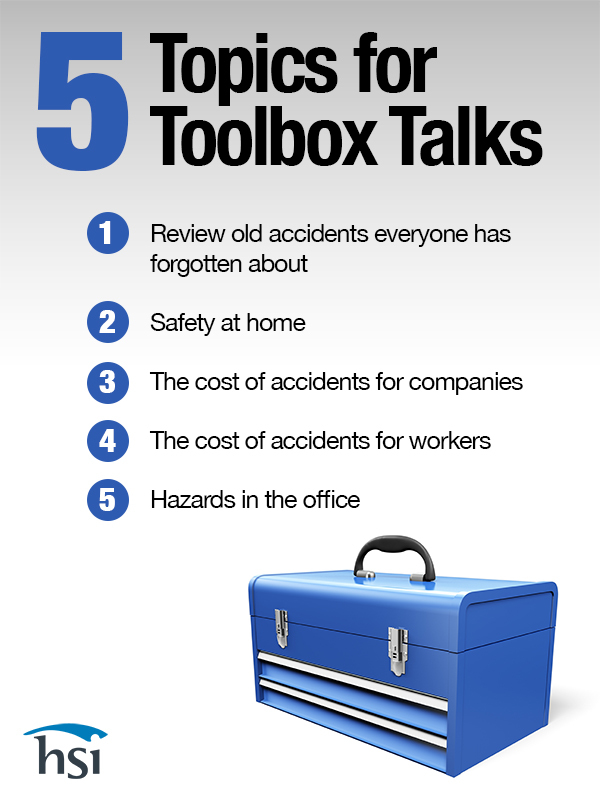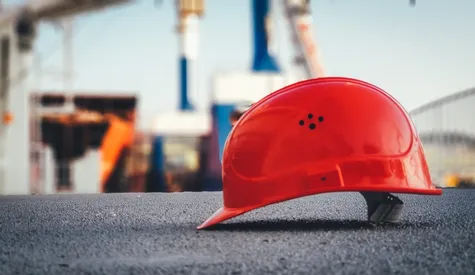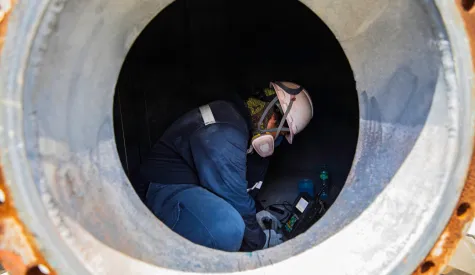How to Give Effective Toolbox Talks, Part 2: The Topics

Constantly finding new topics for safety toolbox talks can be challenging. If you have a morning safety meeting every day, you're spending a lot of time speaking about safety. Five meetings a week multiplied by 52 weeks a year ends up being 260 safety meetings, and that’s not including talks at different work sites or for different shifts. No wonder most safety professionals end up rehashing the same topics repeatedly, and their audience isn't as engaged as they would like.
As discussed in Part 1 of this three-part toolbox talk series, toolbox talks can be a powerful tool to boost workplace safety culture, encourage employee participation, and reduce overall workplace injuries. This second part in the series will help you learn how to identify great topics so your organization can get the most out of its next safety toolbox talk.
Not every topic should be a toolbox talk
OSHA sets strict training guidelines around high-risk topics like bloodborne pathogen safety, hot work, and Lockout/Tagout. Additionally, many workplace safety topics have mandatory lengths and agendas. Therefore, covering these essential subjects in a short 5- to 15-minute meeting wouldn't be enough to give your workers the skills to protect themselves or satisfy the OSHA training requirements.
However, while toolbox talks are not the best way to cover specific subjects, using them to review and reinforce what employees have learned is an excellent use of the medium. They are also great for sparking discussions and brainstorming corrective actions in a collaborative setting. That's why discussing current safety events and incidents, or reviewing infrequent training topics, recently identified hazards, current projects, and upcoming tasks and their hazards are a perfect fit for toolbox talks.
Finding new toolbox talk topics
One of the most important things to remember when searching for a new safety toolbox talk idea is that the topic should always be relevant to the audience and their current work. If it isn't appropriate, you will struggle to keep their attention. Nothing will make a person tune out faster than something they don't believe applies to them.
To avoid this, ask employees for topic ideas relevant to their current work environment. For example, if you know the project's next phase will include trench work, make that a topic of discussion. Then, if you apply that same principle to the next five topic ideas, you will be on your way to creating effective and engaging toolbox talks.

1. Review old accidents everyone has forgotten about
A classic safety meeting topic is to discuss recent accidents and injuries, but what about the old incidents that everyone has forgotten about? In industries with high employee turnover, many of your current employees may not have heard about older accidents and injuries. "Those that fail to learn from history are doomed to repeat it," Winston Churchill wrote. Dig through the archives, bring out the classics, and refresh their memory.
2. Safety at home
According to the National Safety Council, there were 156,300 preventable injury-related deaths in homes and communities in the United States in 2020. Almost 56% of those deaths were from poisoning, and more than 26% were from falls.
Unfortunately, many of us forget to take the safety mindset home when we clock out at the end of the day. For example, employees who always wear their PPE at work might not do the same while working on projects around their homes, even though many of the same or similar hazards are present.
Most people try to disconnect when they get home. They shut off their phones, put on their sweatpants, and the rules and regulations of their work life disappear. Of course, rest is crucial for mental health, but there are some aspects of your job that you should take home with you. Safety is one of them. Have you ever been hurt at home? Start that discussion.
3. The cost of accidents for companies
Money usually gets people's attention. Specifically, discussing the dollars and cents of accidents and injuries and how they can destroy a business. The list of direct and indirect costs is long. For example, companies where workers are regularly hurt typically pay more in insurance, spend more on doctors and lawyers, receive more fines, and can miss out on future work or contracts due to their unsafe reputation.
This topic can shine a light on an area of safety that many workers and members of management might not be so familiar with. Sometimes you may encounter a member of leadership who doesn't seem to see the value of safety. However, when you frame workplace accidents with their monetary costs, the value of safety sometimes becomes much clearer. Don't speak about safety in terms of injury rates; talk about the cost of safety and how injuries hit the bottom line.
4. The cost of accidents for workers
What do your workers genuinely care about, and how would a workplace accident affect that? For example, will they still be able to pick up their child if they hurt their back at work? If they dislocate their shoulder, will they still be able to throw a football with their friends? Something that healthy people rarely think about is how an injury can have a dramatic impact on their quality of life.
What about their livelihood? Some might believe it doesn't matter if they get hurt at work; they'll go on Workers' Compensation and carry on. Unfortunately, it's not so simple. Workers' Compensation is complicated and only pays a percentage of the injured worker's average income. How would an employee's life change if they took a significant pay cut and were physically unable to get a new job? How injuries affect employees' income and quality of life can be a powerful conversation many may have never considered.
5. Hazards in the office
With the number of hazards in most industries, finding safety toolbox talk topics can be as simple as walking around a worksite. However, finding safety topics for the office can be a little more complicated. We often view the office as a risk-free environment, but that's not entirely true. Risks exist in every environment, so make sure your people know about potential hazards, such as ergonomic issues, people standing on chairs, wet surfaces, fire hazards, or filing cabinets tipping over.
Learn more about toolbox talks
Coming up with a new safety topic for the day can be exhausting. Hopefully, this list gave you some ideas to spark interesting, meaningful conversations at your next safety meeting. To learn more about the benefits of safety talks, check out parts 1 and 3 of our toolbox talk series.

